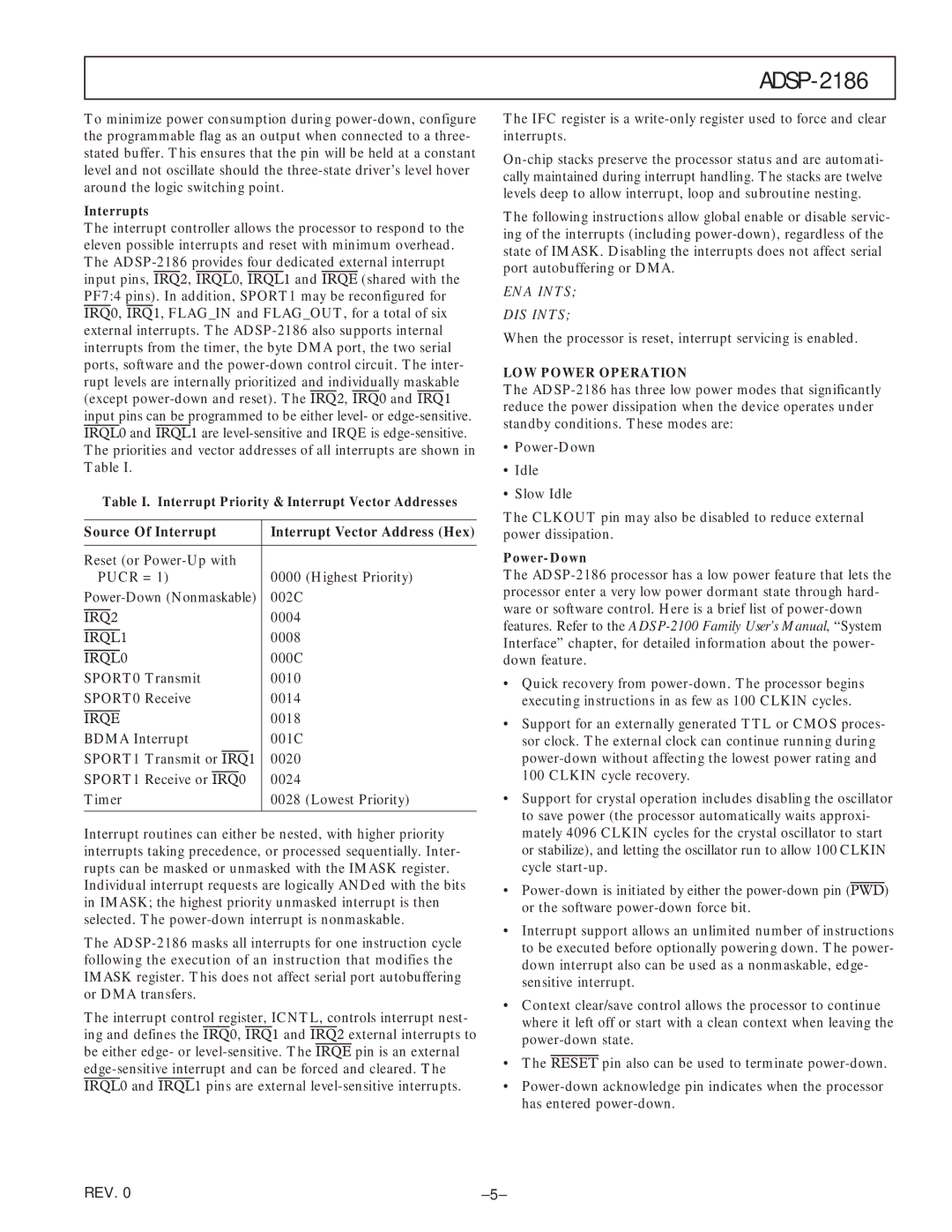ADSP-2186
To minimize power consumption during
Interrupts
The interrupt controller allows the processor to respond to the eleven possible interrupts and reset with minimum overhead.
The
PF7:4 pins). In addition, SPORT1 may be reconfigured for IRQ0, IRQ1, FLAG_IN and FLAG_OUT, for a total of six
external interrupts. The
rupt levels are internally prioritized and individually maskable (except
input pins can be programmed to be either level- or
The priorities and vector addresses of all interrupts are shown in Table I.
Table I. Interrupt Priority & Interrupt Vector Addresses
Source Of Interrupt | Interrupt Vector Address (Hex) |
|
|
Reset (or |
|
PUCR = 1) | 0000 (Highest Priority) |
002C | |
IRQ2 | 0004 |
IRQL1 | 0008 |
IRQL0 | 000C |
SPORT0 Transmit | 0010 |
SPORT0 Receive | 0014 |
IRQE | 0018 |
BDMA Interrupt | 001C |
SPORT1 Transmit or IRQ1 | 0020 |
SPORT1 Receive or IRQ0 | 0024 |
Timer | 0028 (Lowest Priority) |
|
|
Interrupt routines can either be nested, with higher priority interrupts taking precedence, or processed sequentially. Inter- rupts can be masked or unmasked with the IMASK register. Individual interrupt requests are logically ANDed with the bits in IMASK; the highest priority unmasked interrupt is then selected. The
The
The interrupt control register, ICNTL, controls interrupt nest- ing and defines the IRQ0, IRQ1 and IRQ2 external interrupts to
be either edge- or
The IFC register is a
The following instructions allow global enable or disable servic- ing of the interrupts (including
ENA INTS;
DIS INTS;
When the processor is reset, interrupt servicing is enabled.
LOW POWER OPERATION
The
•
•Idle
•Slow Idle
The CLKOUT pin may also be disabled to reduce external power dissipation.
Power-Down
The
•Quick recovery from
•Support for an externally generated TTL or CMOS proces- sor clock. The external clock can continue running during
•Support for crystal operation includes disabling the oscillator to save power (the processor automatically waits approxi- mately 4096 CLKIN cycles for the crystal oscillator to start or stabilize), and letting the oscillator run to allow 100 CLKIN cycle
•
•Interrupt support allows an unlimited number of instructions to be executed before optionally powering down. The power- down interrupt also can be used as a nonmaskable, edge- sensitive interrupt.
•Context clear/save control allows the processor to continue where it left off or start with a clean context when leaving the
•The RESET pin also can be used to terminate
•
REV. 0 |
